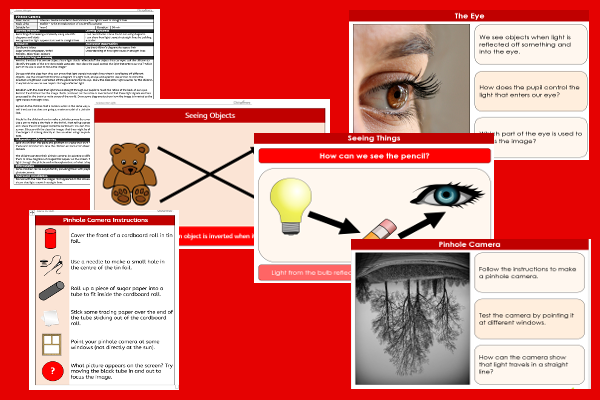Home > Key Stage Two > Science > Year Six Planning > Light
Lesson Four – Pinhole Camera

This science teaching pack for Key Stage Two gets the children to devise and build a model of a pinhole camera to explain and demonstrate how light travels in straight lines from a light source.
The class can explain and illustrate how the images on the screen of the modelled pinhole camera are inverted which can prove that light travels in straight lines.
Download this teaching pack including a lesson plan, classroom activities and an interactive presentation to devise and build a model of a pinhole camera to explain and demonstrate how light travels in straight lines from a light source
Activities in this teaching pack include display posters to identify and explain how light travels in straight lines to make inverted images and a shared reading text to make a model of a pinhole camera to demonstrate how light travels in straight lines.
The interactive presentation gets the children to explore how to build a model of a pinhole camera to demonstrate how light travels in straight lines.
This lesson is part of a science scheme of work to get the children to explore and model concepts about how light is produced and how it can travel through different materials. There are teaching activities for shared learning, differentiated worksheets to support independent learning and interactive presentations to introduce concepts and key skills.
-

Maths Arithmetic Assessment
Assess abilities in solving arithmetic number problems for addition, subtraction, multiplication and division when working with informal and formal written calculations
-

Environment
Identify and describe some of the special landscapes and locations that can be found in the world and reflect on how they can be protected and preserved for the future
-

Silent Letter Words
Explore and illustrate the meanings and spellings of some different words with silent letters when using them in a range of topics and scenarios
-

Complaint Letters
Explain and model how to format and structure writing when composing letters of complaint about different issues and scenarios
